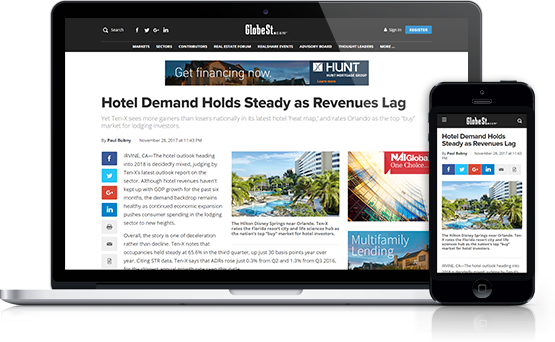Companies are experiencing an interesting challenge as office utilization continues to climb: trying to maximize productivity, both at a corporate and individual level. While employees want minimal distraction to focus on individual productivity when they’re in the office, management is more focused on innovation metrics and tracking strategic goals.
This conflict between “me” and “we” can seem opposing, but, according to experts at JLL, with careful planning, both views of productivity can be accommodated with the right review of the workspace.
Defining Productivity Expectations
It is important to distinguish between productivity expectations, says JLL’s SVP of Workplace Strategy, Courtney Fain. She notes that productivity can vary significantly among individuals, departments and leadership levels. Accommodating diverse aspects of productivity may mean adjusting work spaces, while also considering individual department needs.
According to Fain, JLL's research indicates that creative teams typically thrive in activity-based, neighborhood environments. These spaces prioritize open, adaptable areas and informal meeting zones, departing from conventional office layouts. This approach reduces the emphasis on traditional meeting rooms and quiet, individual work zones. Conversely, professionals such as attorneys, HR specialists and certain financial roles typically need private, quiet spaces for focused work and confidentiality. A mix of private areas for calls and open spaces for collaboration is likely the best blend for sales teams, while IT programmers and engineers want both collaborative spaces for problem-solving and quiet areas for coding.
However, JLL’s Workforce Preferences Barometer showed that 77% of employees want the ability to choose where they work within the office to support their specific work.
“The most important algorithm of space planning is finding the right blend of ‘me + we’ space, which will vary by organization," says Fain. She adds that a utilization study reviewing room reservations and sensor/wireless gateway data may be a good starting point to understand space utilization. From there, companies can identify congestion points and under-utilized or over-utilized spaces and conduct ongoing monitoring to adjust the balance as needed.
Adjusting Work Environments Can Reduce Stress, Improve Productivity
JLL’s Workplace Experience Survey revealed that 65% of employees reported lower stress levels in well-designed office spaces. JLL’s SVP of Workplace Strategy Lauren Hasson suggests addressing these concerns through simple yet effective biophilic design elements. These include incorporating indoor plants, utilizing natural materials such as wood, maximizing access to natural light and implementing other adjustable environmental factors.
“We found that 72% of workers reported lower stress when given access to quiet areas. And a vast majority (81%) experienced reduced stress with flexible work arrangements,” says Hasson. “Even if an organization is office-first, employees experience reduced stress if they’re trusted to flex their schedule when necessary.”
Hasson emphasizes that seemingly minor experiential elements can have a substantial impact on workplace efficiency and satisfaction. For instance, implementing intuitive wayfinding systems and establishing clear naming conventions for spaces and teams can significantly reduce friction and enhance the overall in-office experience. She advises, "It's key to establish and communicate 'team norms' that clarify which spaces are best suited for various work activities. This clarity reduces distractions, makes better use of space and helps everyone work more effectively."
More than ever, companies must recognize that the office is no longer “business as usual,” and that modifications can have tangible results. Fain notes that JLL’s Human Experience Report indicated that offices promoting well-being saw a 13% increase in employee productivity.
Overall, JLL’s Fain and Hasson stress that the physical environment plays a crucial role in reducing stress, improved engagement and collaboration, which can translate into improved performance for both employees and the company as a whole.
For more insights and thought leadership from JLL, click here.
© 2025 ALM Global, LLC, All Rights Reserved. Request academic re-use from www.copyright.com. All other uses, submit a request to [email protected]. For more information visit Asset & Logo Licensing.








